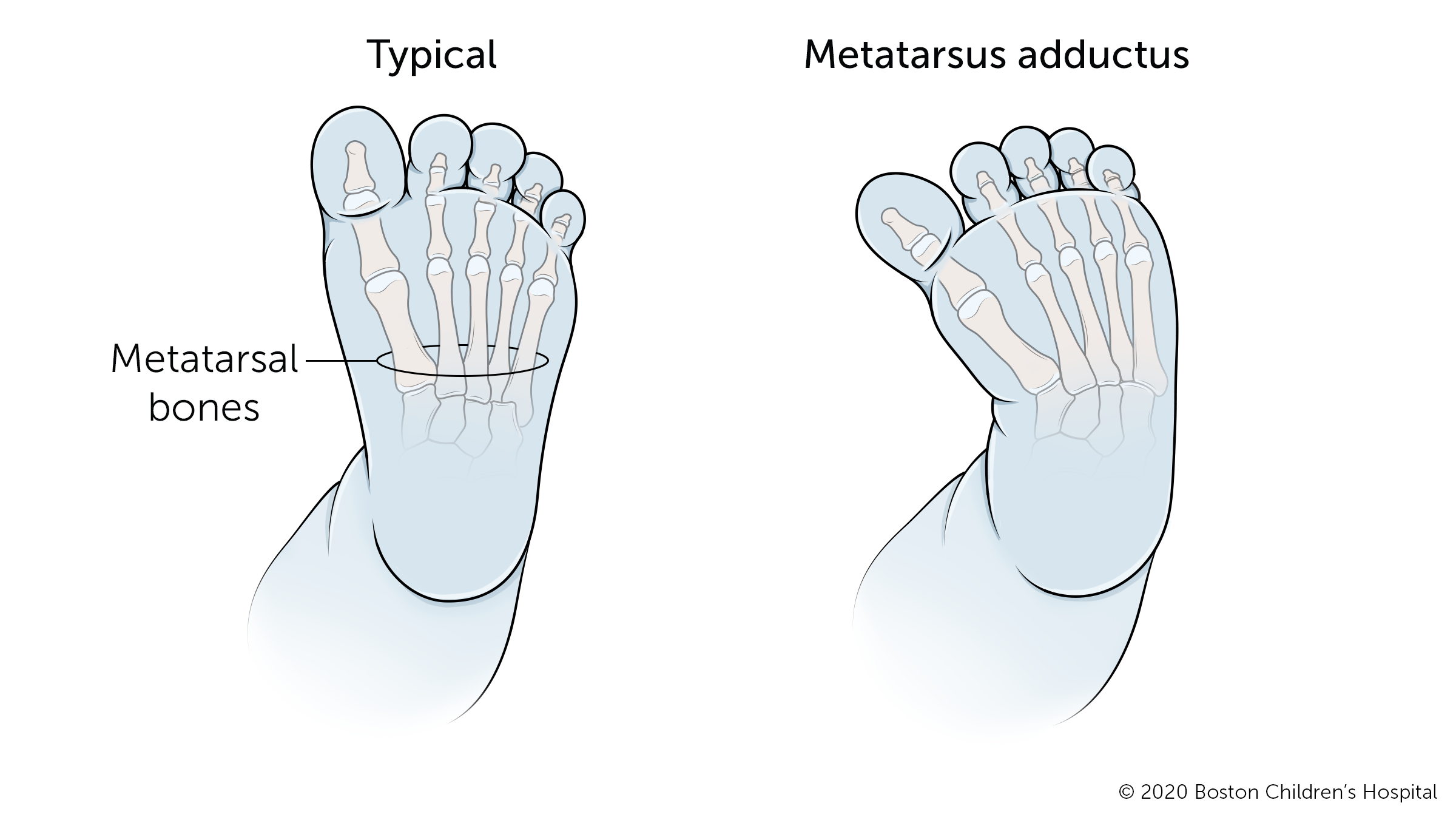Metatarsus Adductus | Diagnosis & Treatments
How is metatarsus adductus diagnosed?
A physician makes the diagnosis of metatarsus adductus with a physical examination. During the examination, the physician will obtain a complete birth history of the child and ask if other family members were known to have metatarsus adductus.
- An infant with metatarsus adductus has a high arch and the big toe has a wide separation from the second toe and deviates inward.
- Flexible metatarsus adductus is diagnosed if the heel and forefoot can be aligned with each other with gentle pressure on the forefoot while holding the heel steady (a technique known as passive manipulation).
- If the forefoot is more difficult to align with the heel, it is considered a non-flexible, or stiff foot.
Diagnostic procedures are not usually necessary to evaluate metatarsus adductus. However, x-rays (a diagnostic test which uses invisible electromagnetic energy beams to produce images of internal tissues, bones, and organs onto film) of the feet are often done in the case of non-flexible metatarsus adductus.
How is metatarsus adductus treated?
Metatarsus adductus is a common problem that can be corrected. Regardless of how much the forefoot turns inward, starting treatment immediately after birth improves your child's prognosis. But babies born with metatarsus adductus rarely need treatment since this condition often corrects itself as the baby grows. Your child's doctor may give you tips on how to ease this process along naturally. Doctors typically recommend surgery for only the most severe cases of metatarsus adductus.
What determines treatment for metatarsus adductus?
- your child's age, overall health, and medical history
- the extent of the condition
- your child's tolerance for specific procedures or therapies
- expectations for the course of the condition
- your opinion or preference
Goals of treatment
The goal of treatment is to straighten the position of the forefoot and heel. Treatment options vary for infants, and may include:
- observation for those with a supple, or flexible, forefoot
- stretching or passive manipulation exercises
- casting
- surgery
Can metatarsus adductus remain untreated?
Studies have shown that metatarsus adductus may resolve without treatment in the majority of affected children.
- Your child's physician or nurse may instruct you on how to perform passive manipulation exercises on your child's feet during diaper changes.
- A change in sleeping positions may also be recommended. Suggestions may include side-lying positioning.
When is casting recommended for metatarsus adductus?
In rare instances, the foot does not respond to the stretching program, plaster casts may be applied.
- Casts are used to help stretch the soft tissues of the forefoot.
- The plaster casts are changed every one to two weeks by your child's pediatric orthopedist.
- If the foot responds to casting, straight last shoes (made without a curve in the bottom of the show) may be prescribed to help hold the forefoot in place.
For those infants with very rigid or severe metatarsus adductus, surgery may be required to release the forefoot joints. Following surgery, casts are applied to hold the forefoot in place as it heals.
Learn more about our care tips for cast maintenance.
Contact your child's physician if your child develops one or more of the following symptoms:
- fever greater than 101 degrees Fahrenheit
- increased pain
- increased swelling above or below the cast
- complaints of numbness or tingling
- drainage or foul odor from the cast
- cool or cold toes
When is surgery recommended for metatarsus adductus?
For those infants with very rigid or severe metatarsus adductus, surgery may be required to release the forefoot joints. Following surgery, casts are applied to hold the forefoot in place as it heals.


